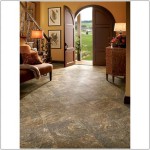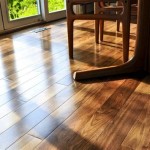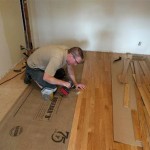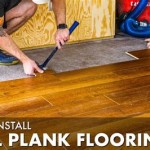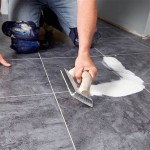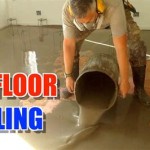How Does Vinyl Plank Flooring Stay In Place On Concrete?
Vinyl plank flooring offers a durable, aesthetically pleasing, and relatively cost-effective flooring solution, particularly popular for concrete subfloors. Understanding how these planks remain securely in place on concrete is crucial for both successful installation and long-term performance. The method used for securing vinyl plank flooring depends largely on the type of vinyl plank and the specific characteristics of the concrete subfloor.
Several factors contribute to the successful adhesion of vinyl plank flooring to concrete. These include the type of adhesive (if applicable), the preparation of the concrete surface, the installation method, and the overall quality of the vinyl plank itself. Each aspect plays a critical role in ensuring the flooring remains stable, level, and resistant to movement over time.
Understanding Different Types of Vinyl Plank Flooring
Not all vinyl plank flooring is created equal, and the mechanism by which it adheres to concrete varies significantly depending on its construction. There are primarily three types: glue-down, click-lock (also known as floating), and loose-lay vinyl plank flooring.
Glue-down vinyl plank flooring relies on a strong adhesive to directly bond the planks to the concrete subfloor. This method provides a very secure and permanent installation. The adhesive acts as the primary bonding agent, preventing slippage and movement of the planks. The type of adhesive used is crucial, and it must be specifically formulated for vinyl and compatible with concrete.
Click-lock vinyl plank flooring, on the other hand, utilizes a tongue-and-groove system that locks the planks together. This type of flooring "floats" above the concrete subfloor and is not directly adhered to it. The weight of the flooring itself, combined with the friction created by the interlocked planks, keeps it in place. A thin underlayment is often used beneath click-lock vinyl to provide cushioning, sound absorption, and to smooth out minor imperfections in the concrete surface. It's important to note that while the planks aren’t glued down, a perimeter glue may be recommended for very large rooms or in areas with high traffic or moisture to prevent shifting or lifting at the edges.
Loose-lay vinyl plank flooring is designed to stay in place primarily through its own weight and a high-friction backing. This type relies on a combination of thickness, density, and a specially engineered backing material to create sufficient friction with the concrete subfloor. While often touted as easy to install without adhesives, loose-lay vinyl may require double-sided tape or a light adhesive in certain situations, such as areas with high traffic or where furniture movement is frequent. The success of this method hinges on a perfectly level and smooth concrete surface.
The Critical Role of Concrete Subfloor Preparation
Regardless of the type of vinyl plank flooring chosen, proper preparation of the concrete subfloor is paramount. A poorly prepared subfloor can lead to installation failures, including plank movement, uneven surfaces, and premature wear and tear. The steps involved in preparing the concrete subfloor typically include cleaning, leveling, and moisture testing.
Cleaning is the first and arguably most important step. The concrete surface must be thoroughly cleaned to remove any dirt, dust, debris, grease, paint, or existing adhesive residue. A shop vacuum is useful for removing loose particles, while a scraper or chemical stripper might be necessary for stubborn residue. Washing the floor with a suitable cleaning solution is often recommended, followed by a thorough rinsing and drying period.
Leveling the concrete subfloor is essential for ensuring a smooth and even surface for the vinyl plank flooring. Imperfections such as cracks, depressions, or unevenness can telegraph through the flooring, creating an unsightly appearance and potentially damaging the planks over time. Self-leveling concrete compounds are commonly used to fill in low spots and create a perfectly level surface. Cracks should be filled with a concrete crack filler before applying the self-leveling compound. It's important to follow the manufacturer's instructions carefully when using self-leveling compounds to ensure proper mixing, application, and curing.
Moisture testing is critical to prevent moisture-related problems that can compromise the longevity of the vinyl plank flooring. Concrete is porous and can absorb moisture from the ground. Excessive moisture can lead to adhesive failure (in the case of glue-down vinyl), mold growth, and warping of the planks. Several methods can be used to test the moisture content of concrete, including calcium chloride tests and electronic moisture meters. The results of these tests will determine whether a moisture barrier is necessary before installing the vinyl plank flooring. A moisture barrier is a specialized membrane that is applied to the concrete surface to prevent moisture from migrating upwards.
Installation Techniques and Adhesion Mechanisms
The installation technique employed directly impacts how well the vinyl plank flooring stays in place on the concrete. For glue-down installations, the application of the adhesive is a critical step.
Glue-down Installation: The appropriate adhesive, as specified by the vinyl plank manufacturer, should be selected. The adhesive should be applied evenly across the concrete surface using a notched trowel. The size and shape of the notches on the trowel are crucial, as they control the amount of adhesive that is applied. The planks should be carefully placed onto the adhesive while it is still wet, ensuring proper alignment and tight seams. A roller is typically used to press the planks firmly into the adhesive, ensuring complete contact and eliminating air pockets. Excess adhesive should be wiped away immediately to prevent it from drying on the surface of the planks.
Click-lock Installation: Click-lock vinyl plank flooring requires precise alignment and firm pressure to engage the interlocking edges. Each plank must be carefully positioned and clicked into place, ensuring a tight and seamless connection. A tapping block and rubber mallet can be used to gently tap the planks together, ensuring a secure fit. It is important to follow the manufacturer's instructions regarding expansion gaps around the perimeter of the room. These gaps allow the flooring to expand and contract with changes in temperature and humidity, preventing buckling or warping. While not directly adhering the planks to the concrete, the interlocking system creates a unified surface that effectively distributes weight and pressure.
Loose-lay Installation: Loose-lay vinyl requires a very smooth and level subfloor to achieve optimal adhesion. The process typically involves simply laying the planks in place, ensuring they are properly aligned and butted together tightly. While the manufacturer may recommend applying double-sided tape or a light adhesive in high-traffic areas or around the perimeter of the room, the primary mechanism for keeping the flooring in place is the weight and friction of the planks themselves. The inherent properties of the plank's backing play a significant role in creating sufficient friction to resist movement.
Furthermore, the environment in which the flooring is installed can affect its long-term performance. Extreme temperature fluctuations, direct sunlight, and excessive moisture can all contribute to the deterioration of the adhesive (for glue-down installations) or the loosening of the planks (for click-lock and loose-lay installations). Maintaining a stable indoor environment is crucial for prolonging the life of vinyl plank flooring.
Selecting the appropriate type of vinyl plank flooring, meticulously preparing the concrete subfloor, adhering to proper installation techniques, and maintaining a stable indoor environment are all essential factors in ensuring that vinyl plank flooring stays securely in place on concrete. A well-executed installation will provide a durable and aesthetically pleasing flooring solution for years to come.

How To Prepare A Concrete Floor For Vinyl Flooring Parrys

Tips For Installing Vinyl Plank Over Concrete Floors Lemon Thistle

10 Beginner Mistakes Installing Vinyl Plank Flooring

Lvp Flooring Installation Over Concrete Subfloor Full Instructional Builds By Maz Flooret

Tips For Installing Vinyl Plank Over Concrete Floors Lemon Thistle

Installing Vinyl Plank Flooring How To Fixthisbuildthat

How To Install Vinyl Plank Flooring Lifeproof Over Concrete

A Beginner S Guide To Installing Vinyl Plank Flooring Dumpsters Com

Installing Vinyl Plank Flooring How To Fixthisbuildthat

What Is Loose Lay Vinyl Flooring A Plank Guide Reallyfloors America S Est Hardwood
See Also
